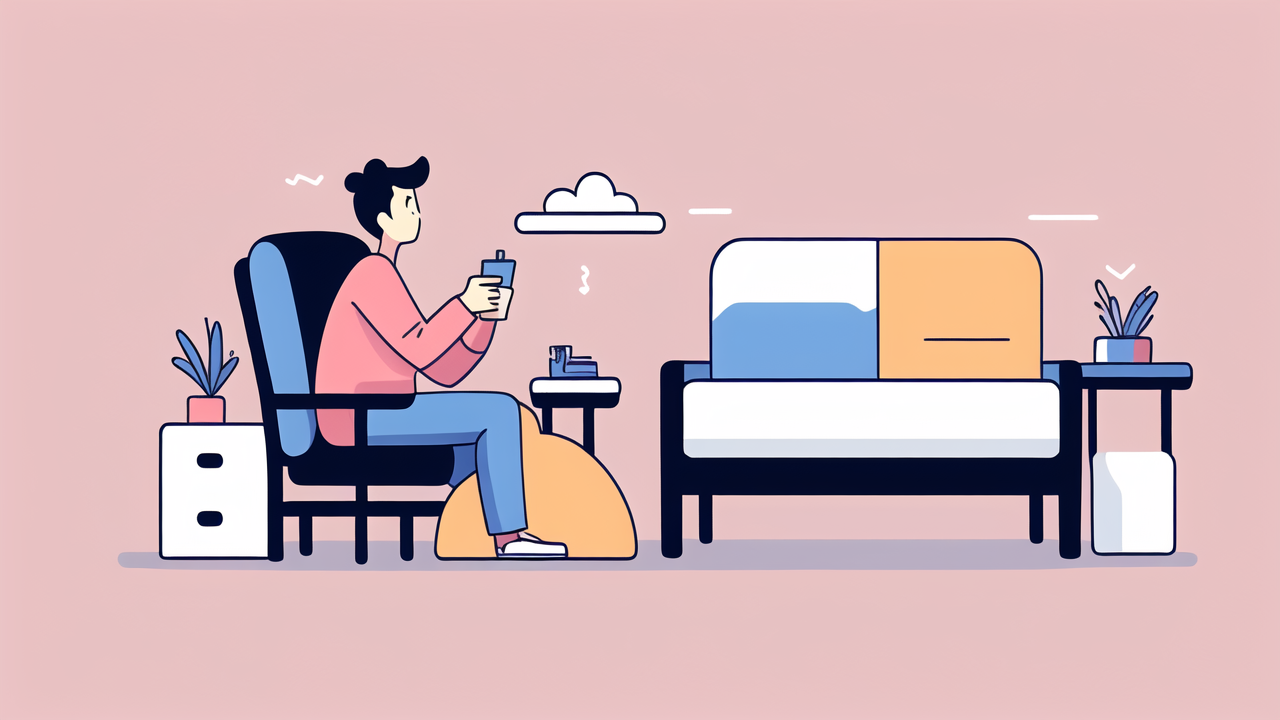Understanding High Density Foam and Its Impact on Recliner Comfort
The Basics of High Density Foam
High density foam is a game-changer in recliner design. It's a type of polyurethane foam with a tight cell structure. This structure gives it unique properties that enhance comfort and durability.

High density foam offers several benefits:
- Better support for the body
- Longer-lasting comfort
- Resistance to sagging and deformation
- Improved weight distribution
The foam's density is measured in pounds per cubic foot. Higher density means more material and less air. This results in a firmer, more supportive seat that maintains its shape over time.
High density foam also absorbs and distributes body heat effectively. This feature keeps you cool and comfortable during extended periods of sitting.
The Evolution of Recliner Chairs and High Density Foam Integration
Recliner chairs have come a long way since their invention in the late 19th century. Early models used simple springs and padding for comfort. As technology advanced, so did recliner design.
The introduction of high density foam marked a significant milestone. It allowed for more precise contouring and support. This evolution improved the overall comfort and functionality of recliners.
Key developments in recliner design include:
- Integration of high density foam in seat cushions
- Use of layered foam for optimal comfort
- Combination of foam with other materials like memory foam
- Custom-shaped foam pieces for targeted support
These advancements have transformed recliners from simple relaxation chairs to ergonomic marvels. Modern recliners, especially lay flat recliner chairs, offer unparalleled comfort and support.
High density foam has played a crucial role in this transformation. It allows for better weight distribution and pressure relief. This is especially important in lay flat recliners, where full-body support is essential.
Innovations in Recliner Design with High Density Foam
Enhancing Ergonomics: The Role of High Density Foam
High density foam has revolutionized ergonomic design in recliners. It allows for precise shaping and contouring to support the body's natural curves. This is crucial for maintaining proper posture and reducing strain.

Key ergonomic benefits of high density foam in recliners include:
- Customized support for different body types
- Reduced pressure points
- Improved spinal alignment
- Enhanced lumbar support
Designers now use high density foam to create zones of varying firmness within the chair. This targeted approach addresses specific ergonomic needs. For example, firmer foam in the lumbar area provides better lower back support.
In lay flat recliner chairs, high density foam plays a vital role. It ensures even support across the entire body when fully reclined. This feature is essential for comfort during extended periods of rest or sleep.
The foam's ability to retain its shape also contributes to long-term ergonomic benefits. It maintains proper support even after years of use, ensuring consistent comfort and posture alignment.
Case Studies: High Density Foam in Modern Recliners
Several leading furniture manufacturers have embraced high density foam in their recliner designs. Let's look at some notable examples:
- Company A's "ErgoComfort" Recliner:
- Uses multi-layered high density foam
- Offers customizable firmness levels
- Reported 30% improvement in user comfort ratings
- Brand B's "LuxeRest" Lay Flat Recliner:
- Features zoned high density foam for targeted support
- Incorporates cooling gel-infused foam
- Received awards for innovative design
- Manufacturer C's "TheraPro" Medical Recliner:
- Utilizes high density foam for pressure relief
- Designed with input from healthcare professionals
- Shows reduced incidence of pressure sores in long-term users
These case studies demonstrate the versatility and effectiveness of high density foam in recliner design. They showcase how this material can be adapted to meet various needs and preferences.
The Future of Recliner Chairs: Trends and Predictions
The Rise of High Density Foam in the Furniture Industry
High density foam has gained significant traction in the furniture industry. Its popularity extends beyond recliners to various seating and bedding applications. This trend is expected to continue and grow in the coming years.

Key factors driving this trend include:
- Increasing consumer demand for comfort and durability
- Growing awareness of ergonomic benefits
- Advancements in foam manufacturing technology
- Rising focus on sustainable and eco-friendly materials
Manufacturers are investing in research and development to improve high density foam. They aim to enhance its properties and explore new applications. This ongoing innovation promises even more comfortable and functional recliners in the future.
The market for high-quality recliners, especially lay flat recliner chairs, is expanding. Consumers are willing to invest in premium seating that offers superior comfort and health benefits. High density foam is a key selling point in this market segment.
Anticipating the Next Generation of Recliner Designs
The future of recliner design looks exciting, with high density foam at its core. Here are some predictions for upcoming trends:
- Smart Foam Technology:
- Integration of sensors for real-time comfort adjustment
- Foam that adapts to body temperature and movement
- Eco-Friendly Innovations:
- Development of bio-based high density foams
- Improved recyclability and reduced environmental impact
- Customization and Personalization:
- 3D-printed foam components for perfect fit
- Modular designs allowing users to adjust firmness levels
- Health-Focused Features:
- Foam infused with therapeutic materials
- Designs targeting specific health conditions
- Enhanced Durability:
- Self-repairing foam technologies
- Extended lifespan through advanced materials
These innovations will likely revolutionize the recliner industry. They promise to deliver unprecedented levels of comfort, functionality, and personalization.
As technology advances, we can expect high density foam to play an even more crucial role in recliner design. It will continue to shape the way we experience comfort and relaxation in our homes and beyond.























